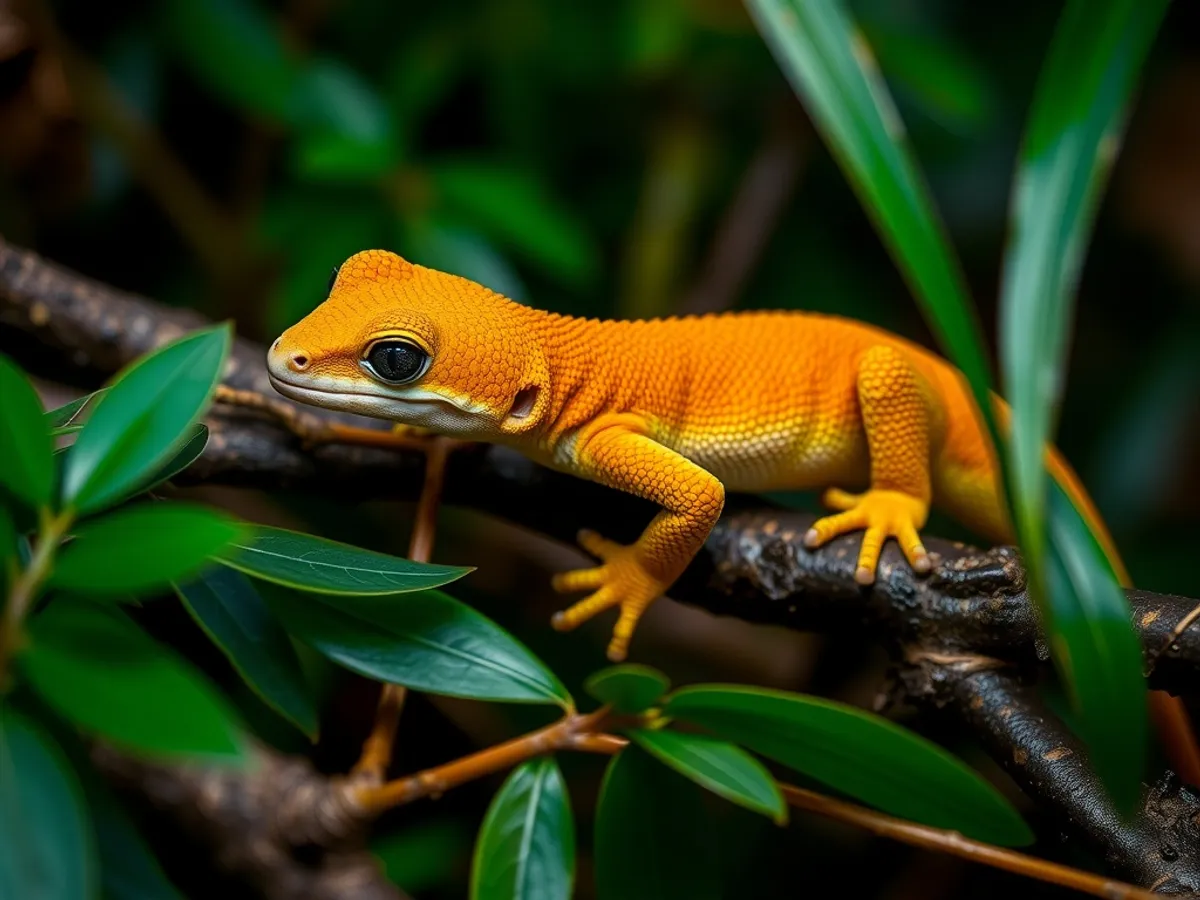
Golden Gecko
Gekko badenii
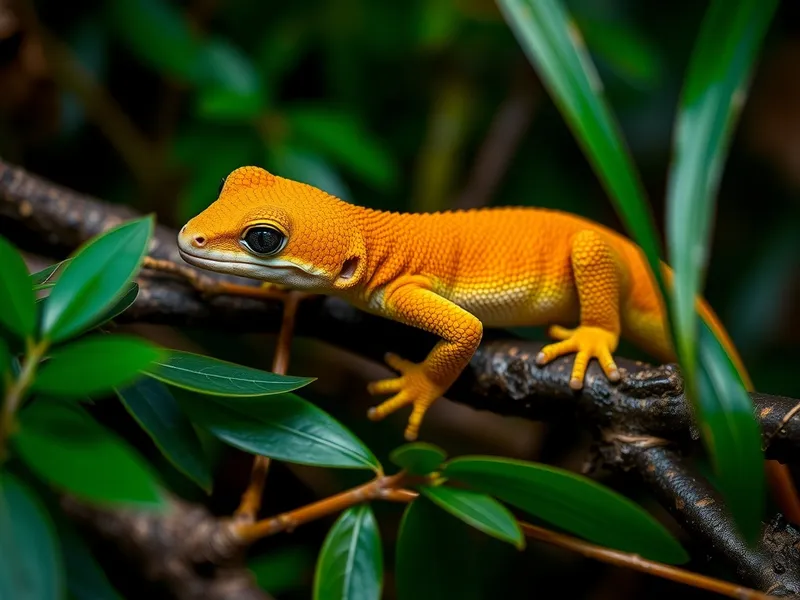
Meet the Golden Gecko
The Golden Gecko is a striking arboreal reptile native to the rainforests of Vietnam. It is well known for its vibrant golden-yellow coloration, which serves as camouflage among lichen and tree bark. Primarily nocturnal, this gecko is an agile climber, using its specialized toe pads to traverse vertical surfaces with ease. Golden Geckos are shy and secretive, often hiding in crevices or under loose bark during the day.
Classification
Reptile
Habitat
Tropical rainforest
Diet
Insectivore
Lifespan
6-10 years
Conservation
Near Threatened
Weight
25-40 grams
📖Fascinating Facts
Sticky Toes
Golden Geckos have specialized toe pads that enable them to adhere to and scale smooth surfaces, making them expert climbers.
Nocturnal Lifestyle
They are primarily active at night, spending daylight hours hidden to avoid predators and conserve moisture.
Rainforest Resident
This species is native to the lush rainforests of central Vietnam, where it relies on dense vegetation for shelter and hunting.
📋Detailed Description
The Golden Gecko (Gekko badenii) is a medium-sized arboreal lizard, with adults typically reaching a snout-vent length of 10–12 cm, and a total length (including tail) of up to 20 cm. Its most distinctive feature is its vivid golden-yellow to yellow-green dorsal coloration, often interspersed with subtle mottling, which provides effective camouflage among mosses, lichens, and sunlit bark in its native forest habitat. The ventral surface is generally lighter, ranging from pale yellow to cream. The head is broad and flattened, with large, lidless eyes adapted for nocturnal vision, featuring vertical pupils that enhance light sensitivity. The toes are equipped with expanded adhesive pads composed of microscopic setae, allowing the gecko to climb smooth vertical surfaces and even hang upside down. Scales are small and granular, with slightly enlarged tubercles along the back and flanks. The tail is prehensile and can be autotomized (shed) as a defense mechanism; it is often regenerated but may differ in color and texture from the original. Golden Geckos are primarily nocturnal and secretive, spending daylight hours concealed in tree crevices or under loose bark. They are solitary outside of the breeding season, with individuals maintaining small, overlapping territories. Their diet consists mainly of insects and other small arthropods, which they capture using rapid tongue flicks and agile movements. During the breeding season, males may display increased vocalizations and territorial behaviors. Females lay clutches of two hard-shelled eggs, which are typically deposited in hidden, humid microhabitats. The species is endemic to the montane evergreen forests of southern Vietnam, where it is restricted to a limited range and specialized microhabitats.
💡 Did you know?
Despite their dazzling appearance, Golden Geckos are rarely seen in the wild due to their secretive, nocturnal habits.
🔬Research & Sources
Wikipedia Summary
The golden gecko, also known commonly as Baden's Pacific gecko, is a species of lizard in the family Gekkonidae. The species is native to Vietnam.
Last Modified: 12/30/2023
🎭Behavior & Social Structure
Golden Geckos are strictly nocturnal, emerging at dusk to forage actively along tree trunks, branches, and foliage. They exhibit sit-and-wait as well as active hunting strategies, relying on their acute vision to detect prey in low light. Feeding primarily on moths, beetles, crickets, and other small invertebrates, they may also consume soft fruits or nectar opportunistically. Social interactions are limited; individuals are generally solitary and may display aggressive posturing, tail waving, or vocalizations (chirps and clicks) to deter intruders, especially during the breeding season. Daytime is spent in concealed refuges, reducing predation risk and desiccation. Golden Geckos are known for their agility, capable of rapid sprints and impressive leaps between branches. They communicate through a combination of visual signals, tactile cues, and vocalizations, particularly during courtship or territorial disputes.
👶Reproduction & Life Cycle
Breeding in Gekko badenii typically occurs during the onset of the rainy season (April to July), coinciding with increased humidity and food availability. Males court females through a combination of head-bobbing displays, tactile stimulation, and vocalizations. After successful mating, females lay one or two hard-shelled eggs per clutch, often adhering them to concealed surfaces such as under bark or in rock crevices. The incubation period ranges from 60 to 90 days, depending on ambient temperature and humidity. There is no parental care post-oviposition; hatchlings are fully independent upon emergence, measuring approximately 4–5 cm in total length. Juveniles exhibit similar coloration to adults but may be more cryptic, aiding in predator avoidance. Females may produce multiple clutches per season if environmental conditions are favorable.
🛡️Adaptations & Survival
Golden Geckos possess several key adaptations for arboreal life. Their specialized toe pads, equipped with microscopic setae, provide exceptional grip on smooth and vertical surfaces, a trait evolved within the Gekkonidae for navigating complex forest canopies. The prehensile, autotomous tail offers both a means of balance and a defense mechanism against predators. Their cryptic coloration mimics the dappled sunlight and lichen-covered bark of their habitat, enhancing camouflage. Nocturnal vision is highly developed, with large eyes and vertical pupils maximizing light intake. Behavioral adaptations include strict nocturnality to avoid diurnal predators and reduce water loss, as well as secretive daytime hiding. The hard-shelled eggs resist desiccation and predation, increasing reproductive success in humid but variable environments.
📚Research Sources
🎨Cultural Significance
There is limited documented cultural significance of the Golden Gecko in local Vietnamese traditions or folklore, likely due to its secretive habits and restricted distribution. However, brightly colored geckos in Southeast Asia are sometimes regarded as symbols of good luck or prosperity. In recent years, the species has gained attention among reptile enthusiasts and the international pet trade, which has contributed to its endangered status. Conservation organizations are working to raise awareness of its ecological importance and the need for habitat protection.
🔬Recent Research & Discoveries
Recent field surveys have refined the known distribution of Gekko badenii, confirming its presence in several isolated montane forest patches in southern Vietnam, particularly in the Ba Den Mountain region. Molecular phylogenetic studies have clarified its relationship within the Gekko genus, distinguishing it from closely related taxa such as Gekko ulikovskii (now considered a synonym). Ongoing research focuses on its habitat preferences, reproductive ecology, and population genetics to inform conservation strategies. Captive breeding programs have been initiated in some institutions to reduce pressure from wild collection and support potential reintroduction efforts. Notably, the species' microhabitat specialization and sensitivity to environmental changes make it an important indicator for forest ecosystem health.
🎥Wildlife Videos

Wildlife - Just Reptiles | Free Documentary Nature
Wildlife - Episode 3: Just Reptiles | Wildlife Documentary Watch 'Wildlife - Episode 4' here: https://youtu.be/SNRyvGzDsww ...
Free Documentary - Nature

Australia’s Remarkable Reptiles - Lizards of Oz | Full Documentary
Australia is the driest inhabited continent on the planet with much of the inland being a virtual desert. However, cold blooded ...
Free High-Quality Documentaries
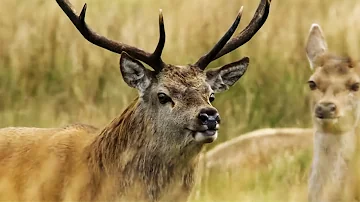
Exploring Britain’s Wild Animals: From Golden Eagles to Goshawks (3H Marathon)
Exploring the country's diverse landscapes and the wildlife that has adapted to survive in extreme environments, from Golden ...
Our World
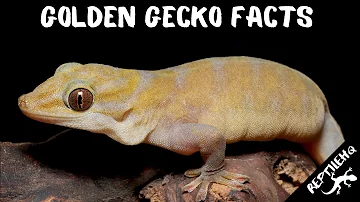
Discover Unexpected Facts about Golden Geckos!
The Golden Gecko is named for its golden or yellow coloration, which can vary in intensity and pattern depending on the ...
ReptileHQ

Crested Geckos of New Caledonia: The Documentary
In 2024, we visited New Caledonia to learn more about crested geckos in the wild. This documentary features the history of the ...
Exotics Keeper
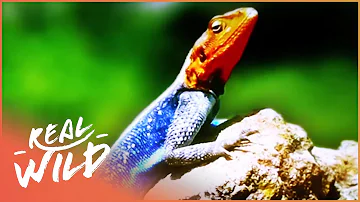
The Strange World Of Lizards (Wildlife Documentary) | Wild About | Real Wild
Lizards are some of the world's most fascinating creatures. Join us as we learn all about these strange creatures and learn how ...
Real Wild
🌍Habitat Information
The Golden Gecko typically inhabits Tropical rainforest environments. Golden Geckos have adapted to their environments with specialized features and behaviors.
Primary Habitat:
Tropical rainforest
More detailed habitat information will be available soon.
🛡️Conservation Status
The Golden Gecko is currently classified as Near Threatened. Conservation efforts are crucial for preserving this species for future generations.
Common Threats:
- 🏠Habitat loss and fragmentation
- 🌡️Climate change impacts
- 🎯Hunting and poaching
- 🏭Human-wildlife conflict
⚠️Threats & Conservation Challenges
Gekko badenii is classified as Endangered by the IUCN due to its highly restricted range in southern Vietnam and ongoing habitat loss. Major threats include deforestation for agriculture, logging, and infrastructure development, which fragment and degrade the montane evergreen forests essential for the species' survival. Illegal collection for the international pet trade further exacerbates population declines. The species' specialized habitat requirements and low reproductive output make it particularly vulnerable to environmental changes. Climate change, leading to altered rainfall patterns and increased temperature extremes, poses additional risks by impacting microhabitat availability and breeding success. Current population trends are declining, with some subpopulations potentially extirpated. Conservation efforts are hindered by limited ecological data and insufficient protected area coverage within the species' range.
🔬Scientific Classification
Scientific Name
Gekko badenii
Classification Hierarchy
🔍 About Taxonomic Classification
Taxonomic classification is a hierarchical system used by scientists to classify and organize living organisms based on shared characteristics and evolutionary relationships.
The system moves from broad categories (Kingdom) to increasingly specific ones, with each animal's scientific name typically consisting of its Genus and species.
📝Community Notes
Share your observations and insights about the Golden Gecko with our community of wildlife enthusiasts.
Join Our Community
Sign in to share your observations and connect with fellow wildlife enthusiasts.
Sign In to ContributeNo community notes yet
Be the first to share your observations about the Golden Gecko!
Explore Golden Gecko
Select a tab above to learn more about this amazing animal.
📸Photo Gallery
No photos available for this animal yet.
🌟Discover More Wildlife
Continue your journey of discovery with more fascinating animals from our database
